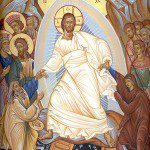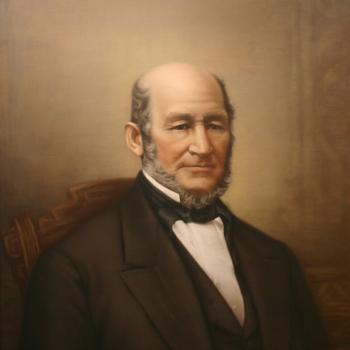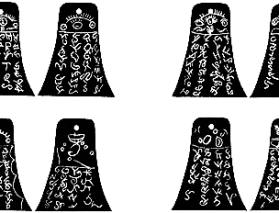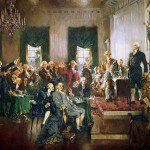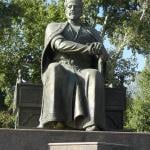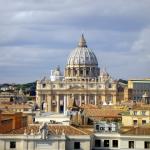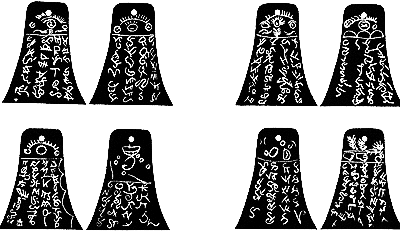
(Wikimedia Commons public domain image)
***
We’re just back from what I think were exceptionally good Sunday meetings. I noticed no reason to believe that it was by conscious design, but both the opening and closing prayers in our sacrament meeting today, and all three of the talks, were given by women. (When some who don’t know much about Latter-day Saints fault us for having an all-male priesthood, I suspect that they assume such a gender distinction to entail the silence of women in our church meetings. But that assumption is quite clearly wrong, and it has been wrong for all of my life, at least.) And my friend Tom Pittman led an excellent discussion in our second-hour priesthood meeting.
***
I’m a bit tardy in calling to your attention the fact that the latest “reel” produced by the the Interpreter Foundation’s on-going Witnesses film project has now gone up on the Interpreter Foundation website. I hope that you’ll enjoy it and find it helpful:
“Witnesses of the Book of Mormon — Insights Episode 10: What were the Kinderhook Plates?”
In 1843, six men claimed to have unearthed ancient metal plates from a burial mound. They were eventually brought to Joseph Smith. Critics have claimed Joseph was fooled by what was eventually revealed to be a fraud. What is the truth of this claim?
This is the tenth in a series compiled from from the many interviews conducted during the course of the Witnesses film project. This series of mini-films is being released each Saturday at 7pm MDT. These additional resources are hosted by Camrey Bagley Fox, who played Emma Smith in Witnesses, as she introduces and visits with a variety of experts. These individuals answer questions or address accusations against the witnesses, also helping viewers understand the context of the times in which the witnesses lived. For more information, go to https://witnessesofthebookofmormon.org/ or watch the documentary movie Undaunted.
Short clips from this episode are also available on TikTok and Instagram.
Be sure to subscribe to our YouTube channel at https://www.youtube.com/c/theinterpreterfoundation and our other social media channels on Facebook, Twitter, Instagram, and TikTok.
***
I have a self-imposed rule here of studiously avoiding partisan political issues. That goes very much against my grain, but I haven’t abandoned the rule. However, the controversy surrounding the recent decision of the Supreme Court of the United States in the case of Dobbs v. Jackson Women’s Health Organization — a decision that, I want to be clear, I wholeheartedly applaud — seems to me to transcend partisan politics, and, so, I will perhaps occasionally be commenting on it. I already have. And I’m now going to do it again, and, because it’s so much on my mind, even on a Sunday:
I recently heard a CNN commentator passionately complaining that, in overturning Roe v. Wade, the Supreme Court has ignored the voice of the people. Let’s stipulate, for purposes of argument, that the American public are in favor of virtually unregulated elective abortion up to a fairly late stage of pregnancy. I don’t think that’s actually true, but it’s not really relevant to what I’m attempting to say in this blog post.
I wish somebody had been there to point out that the Supreme Court wasn’t designed to express the voice of the people. Rather, it was designed to interpret the law, and it was deliberately insulated from the voice of the people — which is why justices of the Supreme Court aren’t popularly elected and aren’t confirmed by the House of Representatives (the so-called “people’s house”) and why they serve life terms, and why they are nominated by the president and confirmed by our least democratically-pressured legislators, the Senate. (And please recall that, originally, senators weren’t to be popularly elected, either. That only came in 1913, when the Seventeenth Amendment to the Constitution of the United States instituted the direct or popular election of senators.) If anything, the Supreme Court was intended by the American Founders to function as a brake upon the will of the people.
Remember, too, that Roe v. Wade was decided by nine men. Seven of them supported the decision, while two did not. Roe v. Wade swept away virtually all laws regulating abortion, at every level of government. Whatever else that may be for a country of hundreds of millions, and whatever the merits of the arguments made for the ruling, it’s not notably democratic. No Supreme Court decision ever is. As Justice Byron White famously put it in his dissent from Roe v. Wade, that decision was “an exercise of raw judicial power.” (Please let it be noted, by the way, that Justice White was a Democrat, and that he was nominated to the Supreme Court in 1962 by President John F. Kennedy.)
The same commentator also claimed that the decision in Dobbs v. Jackson Women’s Health Organization has now divided the United States into two nations, one of which protects “reproductive rights” and one of which doesn’t. But she was wrong. SCOTUS has divided America into fifty distinct jurisdictions. They’re called “states,” and they’ve been around for quite a while. Moreover, they were never intended to be mere administrative units of a monolithic federal government. In doing so, the Court has actually brought the abortion matter closer to the people and to their elected representatives, who can now formulate their own laws through whatever combination they choose of plebiscite or legislation or election. This is called “representative democracy,” and it too has been around for a while. There’s no need to panic. The fifty states will choose their own rules concerning abortion. Some will be restrictive to various degrees. Some will not. For all that I know, California and Massachusetts and New York will make abortion mandatory for all persons (of whatever sex they may be) who become pregnant. That’s called federalism, and it, likewise, has been around since long before Roe v. Wade.
That same commentator, furthermore, insisted that the Dobbs decision represents a theocratic attempt to impose one faction’s religious views upon everybody else in our nation. But the text of the majority opinion in Dobbs is easily available for your reading, and you will not find it making theological arguments. Rather, it quite properly makes constitutional arguments. This is because, although the case was obviously about abortion, in one sense the Supreme Court’s decision isn’t about abortion at all but, instead, about what the Constitution does and does not say about the jurisdiction of the federal government of the United States.
Now that the matter of abortion has been returned to the people and their elected representatives, where, under God, it should have been all along, religious people are free to bring their religiously-informed values to the debate just as non-religious people are entirely free to bring their own values, however derived, to it. This is called democratic, representative government, and it’s what is supposed to occur under the aegis of the Constitution of the United States.
It would be very helpful if, in the debates about abortion that are already heating up — welcome, again, to democracy! — discussants were to think clearly and factually.





